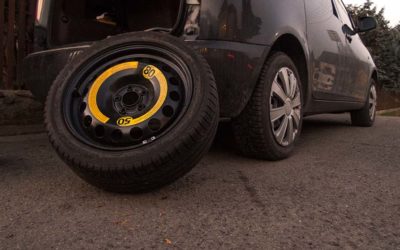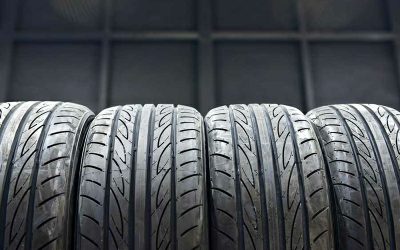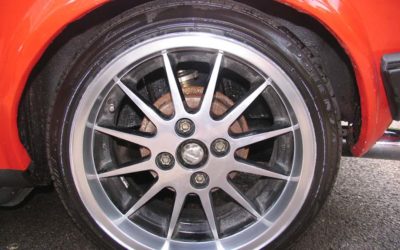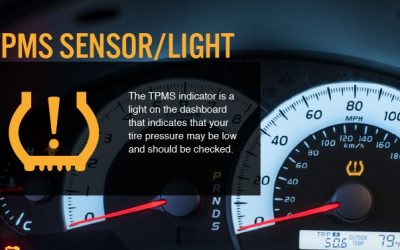Garageband: The Ultimate Tool for Music Enthusiasts

Why Garageband is a Game-Changer in Music Production
Garageband has revolutionized the world of music production software. Unlike other platforms that come with a hefty price tag, Garageband offers a range of features that are both user-friendly and free. This makes it an ideal choice for both beginners and professionals.
The Versatility of Garageband
When it comes to music producing software, Garageband stands out for its versatility. Whether you’re into creating electronic beats or recording live instruments, this software has got you covered. And the best part? It’s all free.
A Look at Garageband’s User Interface
The user interface of Garageband is designed with simplicity in mind. This music making software is intuitive, making it easy for anyone to navigate through its various functionalities. You don’t have to be a tech-savvy music producer to get the hang of it.
Garageband vs Other Music Production Software
While there are numerous options for music production software out there, Garageband holds its own for several reasons. Firstly, it’s free, which is a huge advantage for those just starting out in music production. Secondly, it offers a wide range of features that are comparable to high-end, paid software like Logic Pro and Finale.
Why Garageband is Ideal for Beginners
If you’re new to the world of music production, Garageband is the perfect starting point. Unlike other music recording software that requires a steep learning curve, Garageband is straightforward. Its drag-and-drop interface makes it incredibly easy to create your own tracks.
The Community Around Garageband
One of the most overlooked aspects of Garageband is its community. There are countless online forums, tutorials, and courses dedicated to helping you master this music producer software. So, not only do you have a powerful tool at your fingertips, but you also have a community to help you make the most of it.
How to Get Started with Garageband
Getting started with Garageband is as easy as downloading the software and launching it on your device. Whether you’re using a Mac or have opted for the Windows version available through freegarageband.com, the process is straightforward.
The Range of Instruments Available
Garageband offers a plethora of virtual instruments, from pianos and guitars to drum kits and orchestral instruments. This makes it one of the best free music producing software for those who want to experiment with different sounds.
Tips for Maximizing Garageband’s Features
To truly unlock the potential of Garageband, consider exploring its advanced features. From music notation to beat making, the software offers a range of functionalities that can elevate your music production skills.
🎵 Ready to Dive In? 🎵
If you’re passionate about music production, there’s no reason not to give Garageband a try. Download it now from freegarageband.com and start your musical journey today!
Garage Band: A Closer Look at Its Features
Garage Band’s Virtual Instruments: A Symphony at Your Fingertips
Garage Band offers an extensive library of virtual instruments, making it a playground for musicians. Whether you’re a guitarist, pianist, or electronic music producer, you’ll find something that suits your style.
Garage Band’s Loop Library: Endless Possibilities
The Loop Library in Garage Band is a treasure trove for those interested in music production. With a variety of loops available, you can create complex compositions without needing to record every single instrument.
Garage Band’s User-Friendly Interface: No Expertise Required
One of the standout features of Garage Band is its intuitive user interface. Unlike other music editing software that can be cumbersome, Garage Band’s design is straightforward, allowing you to focus on what matters most: making music.
Garage Band’s Smart Controls: Fine-Tune Your Sound
Smart Controls in Garage Band offer you the ability to tweak your sound to perfection. From adjusting the reverb to fine-tuning the bass, these controls provide a level of customization that is hard to find in free music software.
Garage Band and Mobile Accessibility: Create On-the-Go
In today’s fast-paced world, the ability to create music while on the move is invaluable. Garage Band’s mobile application allows you to do just that. Whether you’re on a train or waiting for a friend, you can start a new project or fine-tune an existing one right from your mobile device.
Garage Band’s Flexibility: From Podcasts to Full Albums
Garage Band isn’t just for music; it’s a versatile platform that can be used for podcasts, sound effects, and even full-length albums. This makes it a one-stop-shop for all your audio production needs.
Garage Band’s Integration with Other Software: A Seamless Experience
If you’re already using other music production tools, you’ll be pleased to know that Garage Band integrates seamlessly with software like Logic Pro and Finale. This allows for a smooth transition between different stages of your production process.

Garageband App: Why It’s a Must-Have for Musicians
Garageband App’s User Experience: Intuitive and Engaging
The Garageband app takes user experience to the next level. With its clean layout and easy-to-navigate menus, you’ll find yourself immersed in the creative process rather than wrestling with complicated settings.
Garageband App’s Portability: Make Music Anywhere, Anytime
What sets the Garageband app apart from desktop versions is its portability. Stuck in traffic or waiting in line? Pull out your phone and lay down some tracks. Your creativity doesn’t have to be confined to a studio.
Garageband App and Collaboration: Team Up and Create
The Garageband app makes collaboration a breeze. Share your projects with friends or bandmates and let the collective creativity flow. It’s like having a portable recording studio that fits in your pocket.
Garageband App’s Export Options: Share Your Genius
Once you’ve crafted your masterpiece, the Garageband app offers multiple export options. Whether you want to upload your track to social media or send it directly to a record label, the choice is yours.
Garageband App and Learning: A Resource for Skill Development
The Garageband app isn’t just a tool for experienced musicians; it’s also a fantastic learning resource. With built-in lessons and tutorials, you can improve your skills and become a more versatile artist.
Garageband App’s Sound Library: A Palette for Your Sonic Masterpiece
The sound library in the Garageband app is expansive, offering a range of instruments and loops that cater to various musical styles. From hip-hop beats to classical compositions, the possibilities are endless.
Garageband App’s MIDI Capabilities: Control Your Sound
For those who want to dive deeper into the technical aspects, the Garageband app offers robust MIDI capabilities. This allows you to connect external instruments and controllers, giving you even more control over your sound.
Garageband for Windows: Breaking Platform Barriers
Garageband for Windows: A Reality or a Myth?
For years, the notion that Garageband is exclusive to Apple devices has persisted. However, Garageband for Windows is not a pipe dream. Various workarounds and third-party solutions make it possible to run this iconic software on a Windows machine.
Garageband for Windows: Performance Metrics
When it comes to performance, many skeptics question whether Garageband for Windows can match its Mac counterpart. The answer is a resounding yes. With the right setup, you can enjoy a seamless, lag-free experience on your Windows PC.
Garageband for Windows: Customization Options
One of the most compelling arguments for using Garageband on Windows is the level of customization it offers. Unlike the Mac version, where you’re somewhat limited by the macOS ecosystem, Windows allows for a broader range of third-party plugins and extensions.
Garageband for Windows: Security Concerns
Security is often a point of contention when discussing software on Windows. However, if you’re using trusted third-party solutions to run Garageband, you can mitigate most risks and enjoy a secure music production environment.
Garageband for Windows: Accessibility and Usability
The beauty of Garageband for Windows lies in its accessibility. You don’t need a high-end machine to run the software efficiently. Even on modest hardware, you can create professional-quality music without any hiccups.
Garageband for Windows: Software Updates
Keeping your software up-to-date is crucial for any digital endeavor. Garageband for Windows is no exception. Regular updates ensure that you have access to the latest features and security patches, enhancing your music production journey.
Garageband for Windows: Community Support
Last but not least, the community around Garageband for Windows is growing steadily. Online forums and tutorials are abundant, providing you with the resources you need to master the software on this alternative platform.
Garageband Windows 10: The New Frontier in Music Production
Garageband Windows 10: Compatibility Explored
The question on everyone’s mind is, “Can I run Garageband on Windows 10?” The answer is more nuanced than a simple yes or no. While Garageband is designed for Apple devices, various methods allow you to use this powerful tool on a Windows 10 system.
Garageband Windows 10: Resource Utilization
One concern users often have is how well Garageband performs on Windows 10 in terms of CPU and memory usage. Rest assured, with the right setup, Garageband runs smoothly, allowing you to focus on your music rather than technical glitches.
Garageband Windows 10: Workflow Advantages
Running Garageband on Windows 10 offers unique workflow advantages. The Windows environment is highly customizable, enabling you to set up your workspace exactly how you like it, which can be a game-changer for your music production process.
Garageband Windows 10: File Management
File management is a breeze when you’re using Garageband on Windows 10. The operating system’s robust file explorer allows for easy organization of your projects, samples, and exported tracks.
Garageband Windows 10: The Cost Factor
Let’s talk about cost. One of the most appealing aspects of using Garageband on Windows 10 is that you don’t have to invest in expensive Apple hardware. Your existing Windows 10 machine can become your new music production hub.
Garageband Windows 10: Plugin Ecosystem
Windows 10 has a rich ecosystem of audio plugins that can enhance your Garageband experience. From virtual instruments to advanced mixing tools, the options are nearly limitless, allowing you to take your music to the next level.
Garageband Windows 10: Troubleshooting Tips
Should you encounter any issues while using Garageband on Windows 10, don’t fret. The online community is filled with troubleshooting guides and expert advice to help you resolve any challenges you may face.

Garage Band for Windows: Unveiling the Myths and Facts
Garage Band for Windows: Emulators to the Rescue
If you’re determined to use Garage Band on a Windows system, emulators are a viable option. These software solutions mimic the macOS environment, allowing you to run Garage Band as if you were on a Mac.
Garage Band for Windows: Latency Concerns
Latency can be a significant issue in music production. However, when set up correctly, Garage Band for Windows offers low-latency performance, ensuring that your creative flow remains uninterrupted.
Garage Band for Windows: User Testimonials
Real-world user testimonials reveal a high level of satisfaction among those who have ventured into using Garage Band on Windows. These positive reviews serve as proof that the software’s functionality doesn’t diminish when crossing platform boundaries.
Garage Band for Windows: Software Alternatives
While Garage Band is a fantastic tool, it’s worth noting that Windows offers its own array of native music production software. Yet, many users find themselves coming back to Garage Band due to its unique features and user-friendly interface.
Garage Band for Windows: System Requirements
Before you dive in, it’s essential to check whether your Windows system meets the software requirements for running Garage Band. Most modern PCs are up to the task, but it’s always better to be safe than sorry.
Garage Band for Windows: Real-Time Collaboration
One feature that sets Garage Band apart is its real-time collaboration capabilities. Even on a Windows system, you can collaborate with other musicians in real-time, making it easier to bring your musical visions to life.
Garage Band for Windows: Keyboard Shortcuts
Keyboard shortcuts can significantly speed up your workflow. Garage Band for Windows supports a variety of shortcuts, allowing you to execute commands quickly, which is especially useful during live recording sessions.
Garage Band Windows: Navigating the Learning Curve
Garage Band Windows: Skill Level Adaptability
One of the most compelling aspects of Garage Band Windows is its adaptability to different skill levels. Whether you’re a novice dabbling in music for the first time or a seasoned professional, the software has something to offer.
Garage Band Windows: Audio Quality Metrics
Audio quality is a non-negotiable factor in music production. Garage Band Windows maintains high audio fidelity, ensuring that your tracks sound crisp and clear, rivaling even some of the more expensive software options.
Garage Band Windows: Version Updates and What They Mean for You
Staying updated is crucial in the digital world, and Garage Band Windows is no exception. Each version update brings new features and improvements, enhancing your overall music production experience.
Garage Band Windows: The Role of Community Feedback
Community feedback plays a significant role in shaping the future of Garage Band Windows. User suggestions often make their way into new updates, making the software more aligned with the needs of its user base.
Garage Band Windows: The Importance of User Documentation
A well-documented user guide can be a lifesaver, especially when you’re exploring new features. Garage Band Windows comes with comprehensive documentation, helping you get the most out of the software.
Garage Band Windows: Cross-Platform Project Compatibility
One of the underrated benefits of Garage Band Windows is its compatibility with projects created on other platforms. This means you can easily switch between different operating systems without worrying about file compatibility issues.
Garage Band Windows: The Impact on Indie Artists
For independent artists working on a budget, Garage Band Windows offers a cost-effective solution without compromising on quality. It levels the playing field, allowing indie musicians to produce high-quality music that can compete with bigger names in the industry.
Garageband PC: Bridging the Gap Between Platforms
Garageband PC: The Debate on Authenticity
There’s often a debate about the authenticity of using Garageband on a PC. Purists may argue that the software loses its essence when moved away from its native macOS environment. However, the end goal is music production, and if Garageband PC can deliver, why not use it?
Garageband PC: The Cloud Storage Advantage
One of the perks of using Garageband on a PC is the ease of cloud storage integration. Whether it’s Google Drive or Dropbox, you can effortlessly save and retrieve your projects, providing an extra layer of security and accessibility.
Garageband PC: The Multi-Track Recording Experience
Multi-track recording is a feature that every music producer craves. Garageband PC doesn’t disappoint in this regard. You can record multiple instruments simultaneously, giving you a rich and layered sound.
Garageband PC: The Influence on Podcasting
Garageband isn’t just for musicians; it’s also a popular tool among podcasters. The PC version offers all the necessary features for podcast recording and editing, making it a versatile choice for various audio projects.
Garageband PC: The Role of Virtual Instruments
Virtual instruments are a cornerstone of modern music production. Garageband PC offers a wide array of these digital instruments, from synthesizers to virtual drum kits, enriching your musical palette.
Garageband PC: The Dynamics of Sound Mixing
Sound mixing can make or break a track. Garageband PC comes equipped with advanced mixing features, allowing you to balance levels, add effects, and fine-tune your audio to professional standards.
Garageband PC: The Future of Mobile Integration
As technology advances, the line between desktop and mobile is becoming increasingly blurred. Garageband PC is well-positioned to integrate with mobile apps, offering a unified experience that could redefine music production on the go.
Garageband for PC: A New Realm of Creative Freedom
Garageband for PC: The Impact on Music Education
Educational institutions are increasingly incorporating digital tools into their curricula. Garageband for PC has emerged as a valuable asset in music education, offering students an accessible platform to explore composition, mixing, and more.
Garageband for PC: The Eco-Friendly Aspect
In an era where sustainability is a growing concern, Garageband for PC contributes by reducing the need for physical instruments in some cases. This not only saves resources but also makes music production more accessible to those on a budget.
Garageband for PC: The Rise of Genre Diversity
The availability of Garageband on PC platforms has contributed to the rise of genre diversity in music. With a plethora of built-in sounds and loops, artists are not confined to a single style, encouraging experimental and cross-genre projects.
Garageband for PC: The Social Media Synergy
The integration of social media sharing features within Garageband for PC has revolutionized how artists share their creations. A single click can publish your track to platforms like SoundCloud or YouTube, reaching a global audience instantly.
Garageband for PC: The Significance of User Ratings
User ratings and reviews play a crucial role in the credibility of any software. Garageband for PC has consistently received high ratings, which speaks volumes about its reliability and performance.
Garageband for PC: The Adaptability to Professional Setups
While Garageband is often considered beginner-friendly, its features are robust enough to fit into a professional music production setup. When used on a PC, it can integrate seamlessly with other pro-level software, offering a comprehensive solution for artists.
Garageband for PC: The Ethical Considerations
As with any software, ethical considerations such as software piracy can arise. It’s essential to use legitimate means to run Garageband on a PC to respect the intellectual property rights of the developers.
Garage Band PC: The Intersection of Innovation and Tradition
Garage Band PC: The Role in Live Performances
Live performances have their own set of challenges, from equipment setup to sound checks. Garage Band PC offers features that simplify these processes, allowing artists to focus more on their performance and less on technicalities.
Garage Band PC: The Influence on Songwriting
Songwriting is an art form that benefits from spontaneity. Garage Band PC enables songwriters to capture their ideas quickly, providing a range of tools to flesh out melodies, harmonies, and rhythms.
Garage Band PC: The Contribution to Film Scoring
Film scoring is another avenue where Garage Band PC shines. Its array of orchestral instruments and loops allows aspiring composers to create compelling soundtracks without needing a full orchestra at their disposal.
Garage Band PC: The Analytics Factor
Data analytics isn’t something you’d typically associate with music production, but Garage Band PC offers valuable insights. Track your most-used instruments, time spent on projects, and more, helping you optimize your creative process.
Garage Band PC: The Scalability Quotient
Garage Band PC is scalable, meaning it can adapt to your growing needs as a musician. Start with basic tracks and loops, and as your skills advance, delve into more complex arrangements and mixing techniques.
Garage Band PC: The Remote Collaboration Element
In today’s interconnected world, remote collaboration is more important than ever. Garage Band PC supports cloud-based project sharing, making it easier for musicians to collaborate from different geographical locations.
Garage Band PC: The Ethos of Open Source
While Garage Band itself is not open-source, its compatibility with open-source plugins when used on a PC opens up a new realm of possibilities. This fosters a community-driven approach to music production, enriching the ecosystem.

Garageband Download: Navigating the Maze of Options
Garageband Download: The Legitimacy Question
When it comes to downloading Garageband, the first thing that comes to mind is legitimacy. There are numerous sites offering Garageband downloads, but not all are trustworthy. It’s crucial to source the software from reputable platforms to avoid potential risks.
Garageband Download: The Role of System Compatibility
Before hitting that download button, ensure your system meets the necessary requirements. A Garageband download is not a small file, and compatibility issues can lead to a frustrating experience.
Garageband Download: The Impact on Disk Space
Disk space is a valuable commodity, especially for those involved in music production. A Garageband download will consume a significant amount of space, so make sure you have enough room to accommodate not just the software but also your future projects.
Garageband Download: The Subscription Models
While Garageband is free on Apple devices, running it on other platforms may involve subscription models. It’s essential to understand the cost implications of your Garageband download, especially if you’re using third-party services to run it on a non-Apple device.
Garageband Download: The Offline Usability Factor
One of the advantages of a Garageband download as opposed to an online version is the ability to use the software offline. This is particularly useful for those who may not always have a stable internet connection.
Garageband Download: The Version Dilemma
Garageband releases frequent updates, each with its own set of features and improvements. When considering a Garageband download, it’s worth exploring which version suits your needs best.
Garageband Download: The User License Agreement
Like any software, a Garageband download comes with a User License Agreement. While often overlooked, it’s important to read through this document to understand your rights and limitations as a user.
What is Garageband App: Demystifying the Buzz
What is Garageband App: The Core Functionality
So, what is Garageband App all about? At its core, it’s a digital audio workstation (DAW) designed to facilitate music production and audio editing. But calling it just a DAW would be an understatement; it’s a creative hub for musicians and audio enthusiasts alike.
What is Garageband App: The User Experience
The user experience sets Garageband App apart from other DAWs. Its intuitive interface makes it easy for beginners to start their musical journey, while still offering advanced features that seasoned pros can appreciate.
What is Garageband App: The Genre Versatility
When asking what is Garageband App, it’s essential to discuss its versatility across genres. Whether you’re into rock, hip-hop, electronic, or classical music, the app provides the tools to produce tracks in any style.
What is Garageband App: The Accessibility Factor
Accessibility is often overlooked in software design, but not in the case of Garageband App. The app offers features like VoiceOver support, making it accessible to users with visual impairments or other disabilities.
What is Garageband App: The Mobile Advantage
One of the unique aspects when exploring what is Garageband App is its mobile version. This allows for on-the-go music production, turning your smartphone or tablet into a portable studio.
What is Garageband App: The Loop Library
A standout feature when delving into what is Garageband App is its extensive loop library. This provides a treasure trove of pre-recorded instrument loops that can be easily dragged and dropped into your projects.
What is Garageband App: The Educational Value
Last but not least, let’s talk about the educational value when answering what is Garageband App. The software offers built-in lessons for guitar and piano, making it not just a production tool but also a learning resource.
How to Use Garageband: A Guide Beyond the Basics
How to Use Garageband: The Art of Sampling
Sampling is a technique that can elevate your tracks, and knowing how to use Garageband effectively includes mastering this skill. The software allows you to import your own samples or choose from its extensive library, offering endless possibilities for customization.
How to Use Garageband: The Importance of Tempo Mapping
Tempo mapping is a feature that often goes unnoticed but can be a game-changer. Learning how to use Garageband means understanding how to manipulate tempo within a track, allowing for dynamic shifts that can add emotional depth to your music.
How to Use Garageband: The MIDI Controller Integration
If you’re wondering how to use Garageband with external hardware, MIDI controller integration is your answer. The software seamlessly connects with various MIDI devices, providing a tactile experience that enhances your creative process.
How to Use Garageband: The Role of Automation
Automation is a powerful tool in Garageband that lets you automatically change parameters like volume or pan during playback. Knowing how to use Garageband’s automation features can bring your tracks to life, adding movement and excitement.
How to Use Garageband: The Drummer Feature
One of the standout features when learning how to use Garageband is the Drummer feature. This offers a virtual session drummer that can adapt to the musical genre and style of your project, providing a realistic drumming experience.
How to Use Garageband: The Master Track
The Master Track is where the final touches to your project happen. Understanding how to use Garageband’s Master Track allows you to apply effects and adjustments that impact the entire project, ensuring a cohesive final product.
How to Use Garageband: The Export Options
Once your masterpiece is complete, you’ll need to know how to use Garageband’s export options. Whether you’re exporting a single track or an entire project, the software offers various formats and quality settings to suit your needs.
Convert Garageband to MP3: The Why and How
Convert Garageband to MP3: The Universality Factor
MP3 is a format that enjoys universal compatibility. When you convert Garageband to MP3, you’re ensuring that your audio files can be played on virtually any device, from smartphones to car stereos.
Convert Garageband to MP3: The Quality Considerations
Quality is a concern when converting any file type. While MP3 is a compressed format, modern encoding techniques have improved its quality significantly. Knowing how to convert Garageband to MP3 without losing much quality can be a valuable skill.
Convert Garageband to MP3: The Storage Benefits
MP3 files are generally smaller than other audio formats. If you’re looking to save some disk space, learning how to convert Garageband to MP3 can be a practical solution.
Convert Garageband to MP3: The Metadata Aspect
Metadata like artist name, album, and genre can be crucial for organization. When you convert Garageband to MP3, most platforms allow you to include this information, making it easier to sort and find your files later.
Convert Garageband to MP3: The Software Choices
There are multiple ways to convert Garageband to MP3, each with its own set of features. Whether you opt for built-in options or third-party software, the choice often depends on your specific needs.
Convert Garageband to MP3: The Batch Conversion Utility
For those dealing with multiple files, batch conversion can be a lifesaver. Some software options allow you to convert Garageband to MP3 in bulk, saving time and effort.
Convert Garageband to MP3: The Legal Implications
It’s essential to consider copyright laws when converting and distributing music. Make sure you have the rights to the tracks you’re converting from Garageband to MP3, especially if you plan to share them publicly.
How to Speed Up a Track in Garageband: Unlocking New Creative Dimensions
How to Speed Up a Track in Garageband: The Artistic Merits
Speeding up a track can do more than just increase its tempo; it can transform the emotional tone and energy of the piece. Learning how to speed up a track in Garageband can be a creative tool for artists looking to experiment with mood and dynamics.
How to Speed Up a Track in Garageband: The Technical Steps
While the concept may sound daunting, the process is quite straightforward. Garageband offers a user-friendly interface where you can adjust the tempo of your track with just a few clicks, making it accessible even for beginners.
How to Speed Up a Track in Garageband: The Impact on Vocals
Vocals are often the most sensitive element when altering a track’s speed. Knowing how to speed up a track in Garageband without distorting the vocal quality is crucial for maintaining the integrity of the song.
How to Speed Up a Track in Garageband: The Remix Potential
For those into remixing, understanding how to speed up a track in Garageband opens up a world of possibilities. Whether it’s creating a dance version of a slow ballad or adding a sense of urgency to a laid-back tune, the sky’s the limit.
How to Speed Up a Track in Garageband: The Genre Flexibility
Different genres have different tempo norms. By mastering how to speed up a track in Garageband, you can adapt a song to fit into multiple genres, expanding its reach and appeal.
How to Speed Up a Track in Garageband: The Live Performance Angle
In a live setting, tempo changes can add an element of surprise and engagement. Artists who know how to speed up a track in Garageband can incorporate these changes into their live sets, offering a dynamic performance that keeps the audience on their toes.
How to Speed Up a Track in Garageband: The Archival Benefits
Sometimes, old recordings may be at a slower tempo due to technical limitations of the time. Learning how to speed up a track in Garageband can breathe new life into these vintage recordings, making them more palatable for modern audiences.








